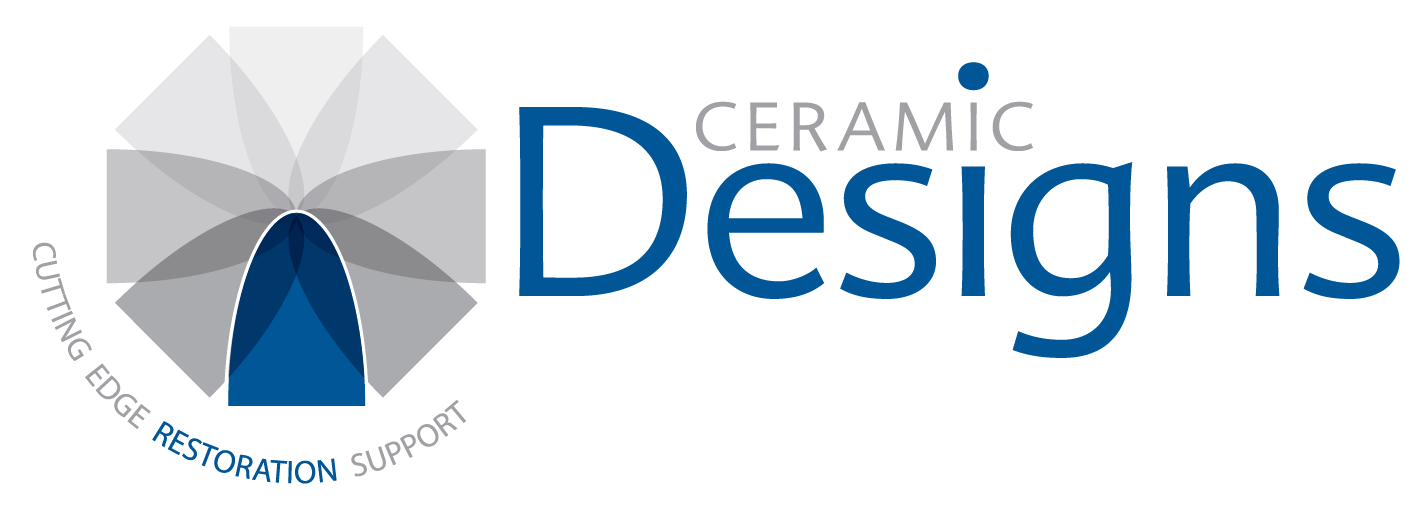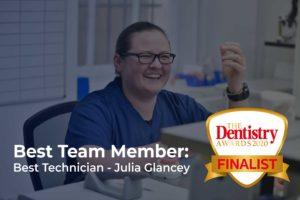Dr Werner Slabbert and Jon Dolding describe how a simple, accurate and stable full arch implant-supported prosthesis changed a patient’s life overnight.
A 60-year-old male attended the Sussex Implant Centre on the recommendation of another patient. He had suffered a complete dental breakdown, which resulted in all his teeth requiring removal. He had been edentulous for more than a year [Figure 1] and could not cope with his lower denture. He did not find it comfortable to wear and was looking for a fixed alternative.
Fixed, permanent solution
The options discussed during the initial consultation included remaking the dentures, securing them with locators or an implant-supported full-arch prosthesis. As he wanted a fixed, permanent solution, the patient chose the latter.
At the first appointment, 2D orthopantomogram and 3D cone beam CT images were taken to confirm the amount of resorption that had occurred and the density of the remaining bone [Figure 2]. Primary impressions were prepared to enable the manufacture of a lower full arch wax try-in denture by Ceramic Designs Laboratory. The wax denture was cast up with laboratory
The simple, predictable laboratory process
Once the patient was happy to proceed, a 3D design was created and forwarded to Anthogyr for the fabrication of the titanium bar. The model and try-in were also posted to the company’s production team to be scanned in, allowing the bar design to be placed within the prosthetic envelope. The plan was sent back to the laboratory to be reviewed, using a 3D viewer, to confirm gaps and spaces were accurately reproduced within tolerances, giving the required aesthetics. Once verification had taken place, the milling process began.
A few days later, the bar was delivered and a silicone key of the original try-in was attached. This was sent to the surgeon to try in, immediately prior to implant placement. When the surgeon and patient had signed off the prosthesis, it was returned to the laboratory for processing, finishing, and
Laboratory
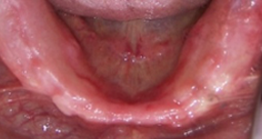
Figure 1

Figure 3
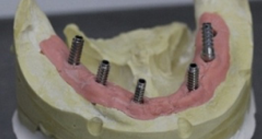
Figure 4
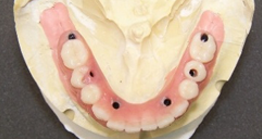
Figure 5
The junction between the bridge and tissue was fairly even, making it easy to clean [Figure 6]. Once the implants had been placed, a flat fit surface was manufactured and polished to aid good healing [Figure 7].
This was a simple prosthesis to produce. Delayed load implant cases are easier and more predictable, as the conversion is not on the same day.
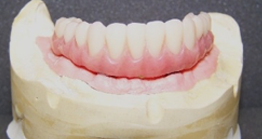
Figure 6
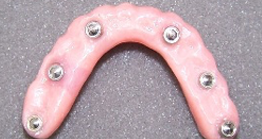
Figure 7
Management of bone resorption
Once the prosthesis had been checked and returned to the laboratory for finishing, the patient was given intravenous sedation and six Axiom®TL narrow implants with inLink® connections were placed in the lower jaw [Figure 8]. Tissue level implants were chosen, as there had already been some resorption of the jaw bone. Given the large frame of the patient, and the forces expected to be exerted on the prosthesis, it was decided that six implants would provide better stability than four. Once the implants were placed, the flap was closed with sutures [Figure 9]. Guide pins were fitted to enable an open tray impression to be taken for the manufacture of the fitting surface of the lower prosthesis [Figures 10 and 11].
Balanced occlusion
After two days, the patient returned to have both a removable upper full denture and the fixed lower full arch bridge placed. Soft tissue healing was progressing well [Figure 12] and the fit was perfect – very accurate and stable – with balanced occlusion. The inLink®connections made attaching the prosthesis quick and simple [Figure 13]. With one-piece implants, there are less moving parts and maintenance is easier.
Confidence boost
The patient was extremely happy with the outcome. It changed his life overnight and gave him a major confidence boost, along with the ability to enjoy the food he had not been able to eat for some time [Figure 14]. He has attended regularly for post-surgery follow-up appointments and, at his recent six-month check, the prosthesis remained stable. The long-term plan is to replace the upper denture with another implant-supported prosthesis.
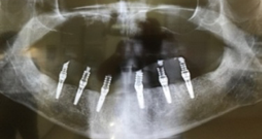
Fig 8
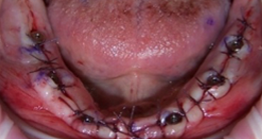
Fig 9
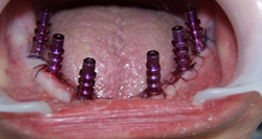
Fig 10
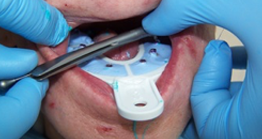
Fig 11
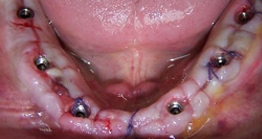
Fig 12

Fig 13
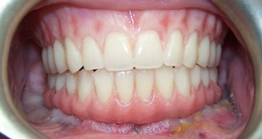
Fig 14
Dr. Werner Slabbert BChD (Stell), MClinDent Oral Surgery (Lond) DipImpDent (UWC) DipSed (Kings), MJDF RCS (Eng)
Dr. Werner Slabbert has a passion for advanced dentistry and in particular implantology, oral surgery, and sedation. He has extensive experience in difficult extractions and implants, and regularly accepts referrals from other dentists. He has completed oral surgery training to specialist level.
Sussex Implant Centre
Hazel Cottage, Warren Road
Woodingdean, Brighton BN2 6DA
Tel: 01273 698045
Email
www.susseximplantcentre.com
Jon Dolding, Owner and Director,
Ceramic Designs Laboratory
Jon was an early adopter of implant and digital dentistry and is now one of the country’s foremost experts in the field. Deeply committed to CPD (both for himself and the team), Jon has attended numerous advanced ceramic courses and is a ceaseless reviewer of the new techniques and materials that keep Ceramic Designs Laboratory at the cutting edge.
Ceramic Designs Laboratory
61 Holland Road, Palmeira Square
Hove, East Sussex BN3 1JN
Tel: 01273 775773
Email
www.ceramicdesignslab.com
From the blog
We are finalists in the Dentistry awards 2020!
We are really excited to be Finalists in this year's Dentistry awards in the following category: Best Member: Best technician - Julia Glancey. What a great achievement for the Prosthetic team and the lab! The awards this year, will be run virtually and it will take...
Let's work together

